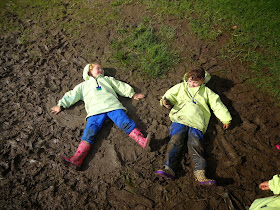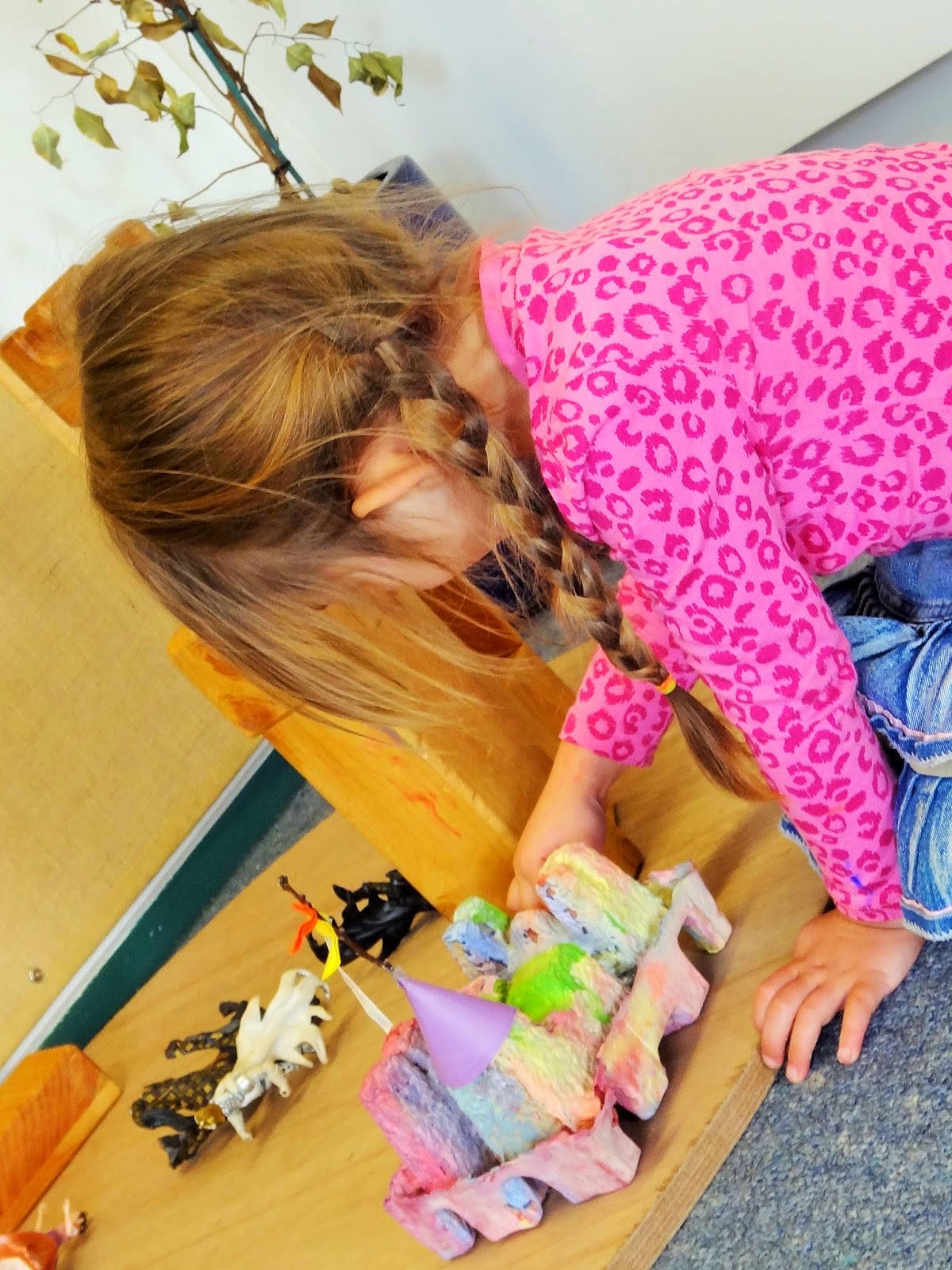Anyone who lives in Northland will of course
be very aware of just how much rain we have seen over the last few weeks. This rain
is something that our ‘nature programme’ children have also been extremely conscious
of.
This little blog story begins three weeks
ago when Kim and the children discovered a very large muddy patch at Mair Park.
This find was quite unexpected and the mud patch was so large, that it was not only fascinating
but also extremely tempting. Honestly, who couldn’t resist getting stuck right
into this?
 |
| Creating mud angels. |
 |
| Oh dear - it's easy to loose your boots in the mud. |
 |
| Trying to pull out the stuck boots. |
‘When you engage the whole body, along with the senses – learning comes naturally’ (Angela Hanscom)
The following week was my turn as the teacher on the nature
programme. I was pretty excited, as the children had spent the whole
week telling me all about this mud patch, and how much they were looking
forward to revisiting it. That week we immediately headed there – and guess
what – it couldn’t really be called mud anymore. In fact the mud had transformed
into one of the largest puddles we had all ever seen. It was such a surprise
that initially we all stood around the edge of the puddle wondering what to do,
then one brave child decided she was going to venture in, and oops fell
straight over onto her bottom. This caused such delight, and encouraged the other children to head into the puddle to jump, splash, sit down, chat, and just generally just have a fantastic time immersed in the water and mud.
The world is mud-luscious and puddle-wonderful
E.E. Cummings
Then last Friday was Donna’s turn as the teacher, and once again the children had told her they wanted to go and visit the mud. Many were wondering and guessing what it would look like this week. I only wish I had been there myself – look at these fantastic photos – the children in just three weeks have gone from being slightly tentative and possibly a little apprehensive at times to being almost completely immersed, head to toe, in the mud; so much so they needed to help each other to get out with a rope. What an experience this must have been. We have all engaged in this type of play ourselves as children, but sometimes it’s easy to forget the delight that comes from doing something so incredible and exhilarating for the first time. When was the last time you did something for the first time, I wonder?

Mud connects us directly with the natural
world. It lets our children get up close and personal with nature, discovering
different mud in different places, the creatures that live in the mud and the
plants that grow in it. We all need to recognise that you can't expect the next
generation to love nature without letting them experience it to its fullest.

Playing with mud and water is “not only loads of fun, but blends
together science, art, math, social studies, sensory input, and language by
providing opportunities to accomplish, communicate, conserve, cooperate,
create, count, facilitate, differentiate (size, shape, amount, colour),
discover, explore, express, converse, initiate, and be gleeful” (Zavitkovsky,
1996)
There is certainly something invigorating about plunging your hands or feet into the earth that creates a connectedness between humans and mother nature that we can feel. Here is a short collection of photos and videos from the last three weeks of the nature programme. I hope it makes you want to get your gum boots out (or your bare feet) and go and find a large muddy puddle!
The Mairtown Team would like to acknowledge that the continued success of this programme is due to the on-going, generous support of community funding organisations like COG's. For the past two years COG's have been able to support our programme with a grant to cover our Education Coordinators role. Thank you :)
Hei konā mai i roto i ngā mihi,
Christine








































.JPG)
.JPG)
.JPG)